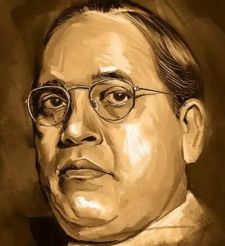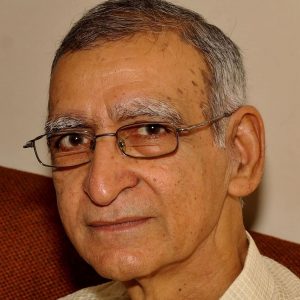How Selective Historical Narratives Are Fuelling Communal Agendas and Distorting National Identity
SINCE THE DEMOLITION of the Babri Mosque by the RSS combine in 1992, history has increasingly taken center stage in public discourse. A particular version of history—one that views the past solely through the lens of kings and their religions—is being imposed on popular consciousness. This narrative is not only selective but also distorted.
Taking it a step further, communal forces are now linking this skewed view of history with nationalism. Ironically, they are trying to connect the era of monarchies with modern nationalism, ignoring the fact that the nation-state is a modern concept. The idea of India as a nation emerged in parallel with the anti-colonial struggle.
In this communal narrative, Hindu kings who fought Muslim rulers are projected as patriots and great nationalists—icons of the Indian nation.

Earlier, Nathuram Godse, who fired three bullets into the chest of Mahatma Gandhi, wrote in his book May It Please Your Honour (based on his court statement) that Gandhi was a pygmy compared to the nationalism of Chhatrapati Shivaji Maharaj or Maharana Pratap.
Today, those who share Godse’s ideology are making such claims even more aggressively. Recently, Uttar Pradesh Chief Minister Yogi Adityanath launched a scathing attack on “those glorifying historical invaders,” calling it an act of treason that “New India” will not tolerate. His statement came amidst growing demands to remove the tomb of Mughal ruler Aurangzeb in Maharashtra’s Chhatrapati Sambhajinagar district.
In a similar vein, RSS Sarkaryavah (General Secretary) Dattatraya Hosabale questioned whether glorifying someone who was “against the ethos of India” was appropriate. He wondered why those who support the Ganga-Jamuni culture (a blend of Hindu and Islamic traditions) never chose to idolise Dara Shikoh, the elder brother of Aurangzeb and a known advocate of this inclusive syncretic tradition.
The Mughal dynasty began with Babur, who ruled in Kabul. Babur was invited by Rana Sanga to defeat Ibrahim Lodi, the then ruler of Delhi.
All this is being said as part of a larger campaign to demonise Aurangzeb as a cruel invader. But let us deconstruct this narrative. Was Aurangzeb really an invader? The simple fact is that Aurangzeb inherited the empire from his father, Shah Jahan.

The Mughal dynasty began with Babur, who ruled in Kabul. Babur was invited by Rana Sanga to defeat Ibrahim Lodi, the then ruler of Delhi. As history played out, Babur ended up fighting both Rana Sanga and Lodi to establish his hold over the Delhi Sultanate.
Even before Babur, the Indian subcontinent witnessed invasions by Greeks, Kushans, Huns, and Shakas—all of whom eventually assimilated into the local population.
The Mughals were not the only rulers of foreign origin to rule parts of India. There were also the Khiljis, Ghulams, and Ghaznavids, who rose to power by defeating local kings. India, as we understand it today, did not exist as a unified nation; rather, it was a land of many kingdoms frequently at war with one another for power and wealth. The continuous interactions among diverse groups—Shakas, Huns, Kushans, and Ahoms in the East—gave rise to the rich syncretism that defines Indian culture today.
Talking of history, there are various ways of presenting it. Hindu communalists tend to over-project kings as central figures, largely because they wish to obscure the brutalities of the caste–varna hierarchies and the subjugation of women in the past.

Br Ambedkar
In contrast, Dr B.R. Ambedkar presents Indian history as a battle between Buddhism and Brahmanism. According to him, Buddhism arose as a revolutionary force against the Brahmanical caste–varna values. This led to Buddhism’s widespread acceptance as India’s dominant religion for a significant period.
Emperor Ashoka played a key role in spreading Buddhism beyond the Indian subcontinent, helping it evolve into a global religion. However, Ambedkar argues that this social revolution was followed by a counter-revolution led by Pushyamitra Shunga, who initiated a physical and ideological purge of Buddhists, effectively erasing Buddhism from the Indian landscape—until Ambedkar revived it in the 20th century.
The brutalities inflicted on Dalits and women have been a central feature of Indian society. During the colonial period, social reformers attempted to mitigate these injustices—efforts that have left a lasting legacy, even though such discrimination still persists in many forms.
Is Raja Ram Mohan Roy not a great icon of India? What about Jyotirao Phule and Babasaheb Ambedkar, who dedicated their lives to dismantling the caste–varna system? And where should we place the contributions of revolutionaries like Bhagat Singh and Ashfaqullah Khan? The legacies of Gandhi, Maulana Azad, Sardar Patel, Nehru, and Subhas Chandra Bose are etched in the collective memory of India in letters of gold.
The overplaying of the cruelties of Muslim kings serves two main purposes in the Hindu nationalist project. First, it targets religious minorities, particularly Muslims. Second—and more crucially—it helps obscure the brutalities perpetuated by the Brahminical social order, which forms the ideological base of Hindu nationalism.
 From the Prime Minister to the Chief Minister of Maharashtra, all praised the film Chaava. And now, the same Chief Minister is blaming it for communal tensions in Nagpur.
From the Prime Minister to the Chief Minister of Maharashtra, all praised the film Chaava. And now, the same Chief Minister is blaming it for communal tensions in Nagpur.
Will these leaders ever support films that portray the atrocities committed against Dalits and women in the past? It is worth recalling that BJP leader Vijayaraje Scindia once openly supported the practice of sati (the immolation of a widow on her husband’s funeral pyre). Today, Yogi Adityanath, Devendra Fadnavis, and Dattatraya Hosabale are playing the communal card to the hilt. ![]()
—————
Also Read:
Agreed! Manusmriti Should Be Implemented—But Would Hindus Accept It?
Disclaimer : PunjabTodayNews.com and other platforms of the Punjab Today group strive to include views and opinions from across the entire spectrum, but by no means do we agree with everything we publish. Our efforts and editorial choices consistently underscore our authors’ right to the freedom of speech. However, it should be clear to all readers that individual authors are responsible for the information, ideas or opinions in their articles, and very often, these do not reflect the views of PunjabTodayNews.com or other platforms of the group. Punjab Today does not assume any responsibility or liability for the views of authors whose work appears here.
Punjab Today believes in serious, engaging, narrative journalism at a time when mainstream media houses seem to have given up on long-form writing and news television has blurred or altogether erased the lines between news and slapstick entertainment. We at Punjab Today believe that readers such as yourself appreciate cerebral journalism, and would like you to hold us against the best international industry standards. Brickbats are welcome even more than bouquets, though an occasional pat on the back is always encouraging. Good journalism can be a lifeline in these uncertain times worldwide. You can support us in myriad ways. To begin with, by spreading word about us and forwarding this reportage. Stay engaged.
— Team PT

